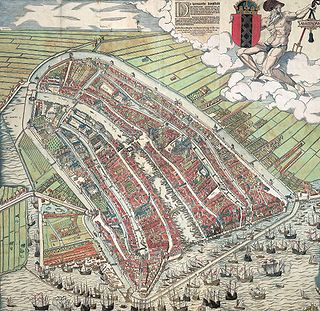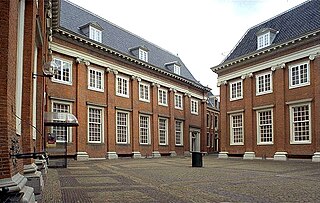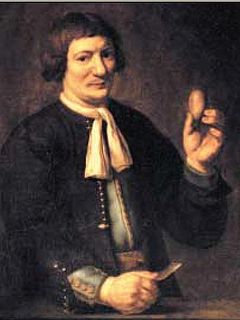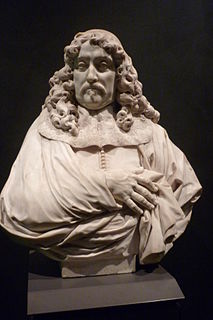 W
WAmsterdam has a long and eventful history. The origins of the city lie in the 12th century, when fishermen living along the banks of the River Amstel built a bridge across the waterway near the IJ, which at the time was a large saltwater inlet. Wooden locks under the bridge served as a dam protecting the village from the rising IJ waters, which often flooded the early settlement. The mouth of the river Amstel, where the Damrak is now, formed a natural harbor, which became important for trading-exchange from the larger koggeships into the smaller ships that sailed the merchandise deeper into the hinterland.
 W
WAFC Ajax is one of the most successful clubs in Dutch football. Historically, Ajax is the most successful club in the Netherlands, with 34 Eredivisie titles and 19 KNVB Cups.
 W
WThe Allard Pierson Museum is the archaeological museum of the University of Amsterdam. It is situated at the Oude Turfmarkt 127 in Amsterdam, the Netherlands. Artifacts from the ancient civilizations of ancient Egypt, the Near East, the Greek World, Etruria, and the Roman Empire are curated and exhibited in this museum.
 W
WThe Amsterdam Museum, until 2011 called the Amsterdams Historisch Museum, is a museum about the history of Amsterdam. Since 1975, it is located in the old city orphanage between Kalverstraat and Nieuwezijds Voorburgwal.
 W
WAn Amsterdammertje is the typical red-brown steel traffic bollard that is used to separate the pavement from the street in Amsterdam. Amsterdammertje is Dutch for 'little one from Amsterdam'. The bollards bear the three Saint Andrew's Crosses from the coat of arms of Amsterdam.
 W
WAtria, institute on gender equality and women's history is a public library and research institute in Amsterdam dedicated to research and policy advice on gender equality and to the documentation and archival of women's history. Its previous names were International Information Centre and Archive for the Women's Movement (IIAV) (1988-2009) and Aletta, Institute for Women's History (2009-2013).
 W
WAndries Bicker was a wealthy Dutch merchant in Russia, a member of the vroedschap, the leader of the Arminians, an administrator of the VOC, representative of the States-General of the Netherlands and colonel in the Civic guard. He controlled the city's politics in close cooperation with his uncle Jacob Dircksz de Graeff and his brother Cornelis Bicker.
 W
WAmsterdam, capital of the Netherlands, has more than 100 kilometers (62 mi) of grachten (canals), about 90 islands and 1,500 bridges. The three main canals, dug in the 17th century during the Dutch Golden Age, form concentric belts around the city, known as the Grachtengordel. Alongside the main canals are 1550 monumental buildings. The 17th-century canal ring area, including the Prinsengracht, Keizersgracht, Herengracht and Jordaan, were listed as UNESCO World Heritage Site in 2010, contributing to Amsterdam's fame as the "Venice of the North".
 W
WThe coat of arms of Amsterdam is the official coat of arms symbol of the city of Amsterdam. It consists of a red shield and a black pale with three silver Saint Andrew's Crosses, the Imperial Crown of Austria, two golden lions, and the motto of Amsterdam. Several heraldic elements have their basis in the history of Amsterdam. The crosses and the crown can be found as decorations on different locations in the city.
 W
WRoyal Coster Diamonds is the oldest, still operating, diamond polishing factory in the world, located in Amsterdam, Netherlands. Founded in 1840, they have handled a few historical masterpieces. For example, they re-polished the Koh i Noor, which is mounted in the Crown of Queen Mary, and the Dresden Green Diamond, held in the New Green Vault at Dresden Castle.
 W
WJan de Doot is the subject of a painting from 1655 by Carel van Savoyen. It shows De Doot, a smith, holding in one hand a kitchen knife, and in the other a large bladder stone the size and shape of an egg, set in gold. This 17th-century Dutch blacksmith is said to have performed a successful lithotomy on himself in 1651. The painting is part of the Portrait Collection of the Laboratory of Pathology, which is part of the University of Leiden.
 W
WDe Eglantier was a chamber of rhetoric in Amsterdam that arose in 1517 or 1518, possibly as a continuation of older chambers of rhetoric. It is one of the most famous chambers of rhetoric. Its insignia consisted of a thriving Eglantine Rose in the form of a cross from which a Christ Figure was hanging. The corresponding slogan was "In Love, Flourishing". The name derives from a romantic reference to the poem Beatrijs, where the lovers met by the wild rose. One of the most important leaders of the chamber was Hendrik Laurenszoon Spiegel. Other prominent members were Laurens Reael, Roemer Visscher and Dirck Volckertszoon Coornhert.
 W
WEuronext Amsterdam is a stock exchange based in Amsterdam. Formerly known as the Amsterdam Stock Exchange, it merged on 22 September 2000 with the Brussels Stock Exchange and the Paris Stock Exchange to form Euronext.
 W
WThe flag of Amsterdam is the official flag for Amsterdam, the capital city of the Netherlands. The current design of the flag depicts three Saint Andrew's Crosses and is based on the escutcheon in the coat of arms of Amsterdam.
 W
WFree Imperial Knight Andries de Graeff was a very powerful member of the Amsterdam branch of the De Graeff - family during the Dutch Golden Age. He became a mayor of Amsterdam and a powerful Amsterdam regent after the death of his older brother Cornelis de Graeff. Like him and their father Jacob Dircksz de Graeff he opposed the house of Orange. In the mid-17th century he controlled the finances and politics.
 W
WJacob Dircksz de Graeff was one of the most illustrious members of the De Graeff family. He was a powerful member of the States Faction, regent and mayor of Amsterdam after the political collapse of Reinier Pauw in 1627.
 W
WThe Jokinen Plan comprises two reports drawn up by the American traffic expert David A. Jokinen on the urban planning of two Dutch cities: in 1962 of The Hague and in 1967 of Amsterdam, both set out in a brochure.
 W
WThe Leidsepoort is a former landmark city gate in Amsterdam, the Netherlands, formerly located at what today is the Leidseplein.
 W
WMetz & Co was a department store in Amsterdam, The Netherlands, founded in 1740 which closed in 2013.
 W
WMokum (מקום) is the Yiddish word for "place" or "safe haven". It is similar to the Hebrew word makom, from which it is derived.
 W
WLeendert Pieter de Neufville was a Dutch merchant and banker trading in silk, linen, grain. His business grew quickly during the Seven Years' War. De Neufville secretly supplied the Prussian army with gunpowder. It is likely that the army's outsourcing of handling bills of exchange in commercial payment boosted his business in a sophisticated form of letters of credit, acceptance loans. His business model had similarities with the modern shadow banking system.
 W
WThe Rijkswerf in Amsterdam was a Dutch shipyard that build a significant amount of warships for the Royal Netherlands Navy.
 W
WThe Singel is one of the canals of Amsterdam. The Singel encircled Amsterdam in the Middle Ages, serving as a moat around the city until 1585, when Amsterdam expanded beyond the Singel. The canal runs from the IJ bay, near the Central Station, to the Muntplein square, where it meets the Amstel river. It is now the inner-most canal in Amsterdam's semicircular ring of canals.
 W
WDirck or Diederik Tulp (1624–1682) was the son of the surgeon professor Nicolaes Tulp and involved in the Dutch East India Company and the Civic guard. Dirck Tulp visited Moscovia with his father-in-law; he was painted in 1653 by Paulus Potter.
 W
WThe University of Amsterdam is a public university located in Amsterdam, Netherlands. The UvA is one of two large, publicly funded research universities in the city, the other being the Vrije Universiteit Amsterdam (VU). Established in 1632 by municipal authorities and later renamed for the city of Amsterdam, the University of Amsterdam is the third-oldest university in the Netherlands. It is one of the largest research universities in Europe with 31,186 students, 4,794 staff, 1,340 PhD students and an annual budget of €600 million. It is the largest university in the Netherlands by enrollment. The main campus is located in central Amsterdam, with a few faculties located in adjacent boroughs. The university is organised into seven faculties: Humanities, Social and Behavioural Sciences, Economics and Business, Science, Law, Medicine, Dentistry.
 W
WThe walls of Amsterdam were built in the Middle Ages to protect the city against attack. The Medieval walls were replaced with a series of bastions in the 17th century. In the 19th century, the walls were torn down and replaced with the Defence Line of Amsterdam, a fortification line which encircled Amsterdam at a distance from the city.